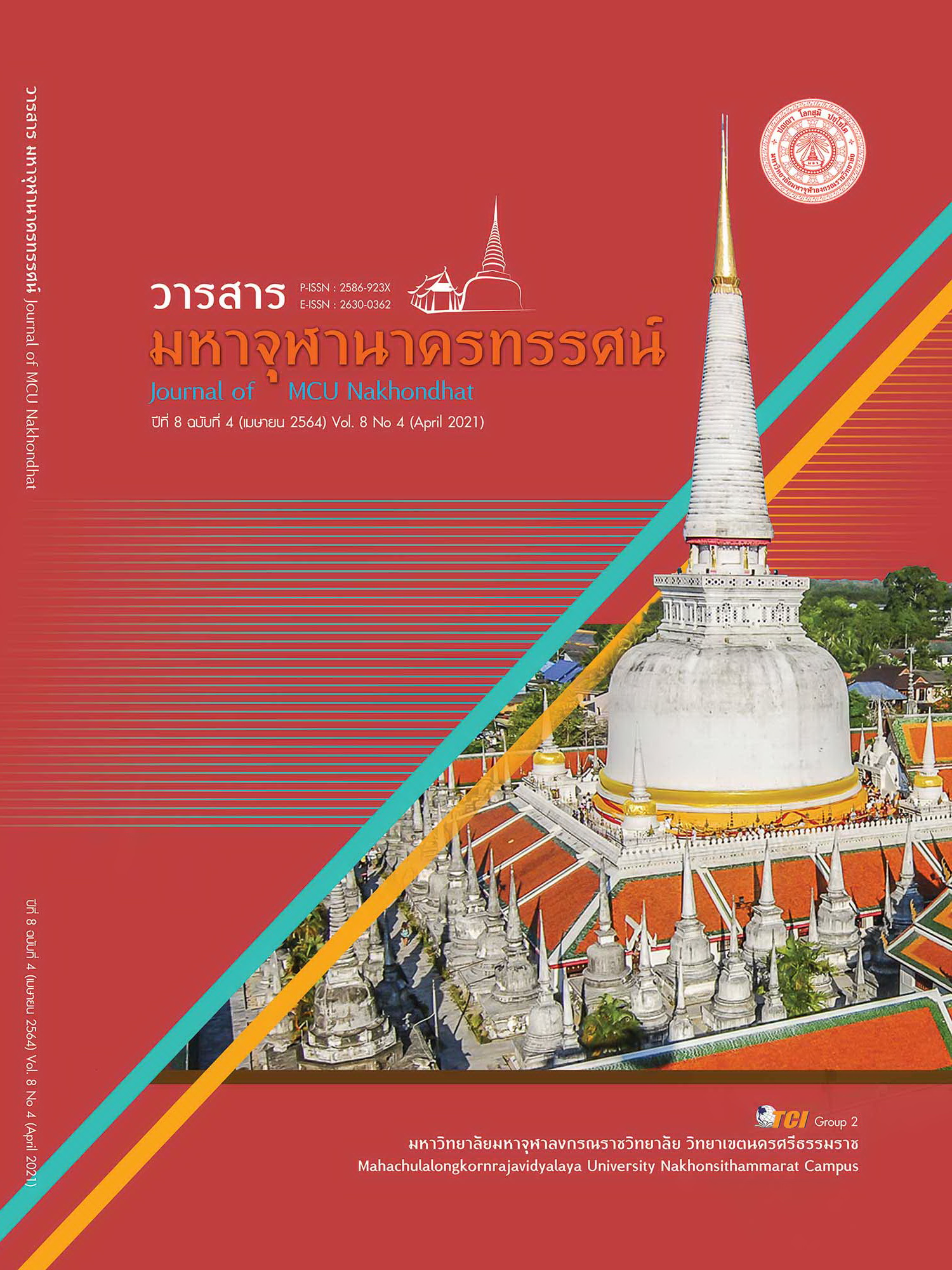BUDDHIST HUMAN RESOURCE DEVELOPMENT MANAGEMENT
Main Article Content
Abstract
This article discusses the benefit of Human resource development brings benefits The agency or organization has progressed according to the goals set. There are 7 steps of human resource management process as follows: 1) Work analysis and design, the work allocation process in order to acquire quality employees that meet the organizational objectives 2) Human resource planning. Management processes to provide jobs that are appropriate enough to meet the needs of both current and future organizations; 3) recruiting and selection; Processes to provide organizations with potential employees to meet their needs; 4) Training and development processes that enable stable growth. and sustainable development 5) Performance management Processes that will ensure that it works and performance. 6) Compensation management. A process that encourages employees to work at their best. Compensation such as salary, welfare, or other benefits will help with gifts and encouragement. and 7) increase the relationship between employees and the organization This may happen between the management and the operator, including the operators themselves. Buddhist principles, which are integrated into human resource management, have adopted the ten principles of charity which are very important to human development today. Because it is a principle that enables human beings to live happily in society and peace was born together Reduce social problems and of a nation with only constant conflicts for the reason that the ten principles of charity cover three aspects of human development: physical, verbal, and psychological.
Article Details
References
เชาว์ โรจนแสง. (2554). เอกสารการสอนชุดวิชาการพัฒนาทรัพยากรมนุษย์หน่วยที่1 - 7, (พิมพ์ครั้งที่ 3) มหาวิทยาลัยสุโขทัยธรรมาธิราช. จังหวัดนนทบุรี: สำนักพิมพ์มหาวิทยาลัยสุโขทัยธรรมาธิราช.
ฑัมม์พร นิพนธ์พิทยา. (2561). ความสำคัญของการวิจัยทรัพยากรมนุษย์. วารสารวิจัยวิชาการ, 1(2), 121-36.
พระอธิการประมวล อธิปญฺโญ (จันทรประทักษ์). (2563). หลักกุศลกรรมบถ 10 กับการพัฒนาทรัพยากรมนุษย์. วารสารบัณฺฑิตศึกษามหาจุฬาขอนแก่น, 7(3), 32-44.
มหาจุฬาลงกรณราชวิทยาลัย. (2539). พระไตรปิฎกภาษาไทย ฉบับมหาจุฬาลงกรราชวิทยาลัย. กรุงเทพมหานคร: โรงพิมพ์มหาจุฬาลงกรราชวิทยาลัย.
วิลาวรรณ รพีพิศาล. (2554). ความรู้พื้นฐานในการบริหารทรัพยากรมนุษย์. กรุงเทพมหานคร: โรงพิมพ์วิจิตรหัตถกร.
ศิรภัสสรศ์ วงศ์ทองดี. (2559). การพัฒนาทรัพยากรมนุษย์. (พิมพ์ครั้งที่ 3) ฉบับปรับปรุง. กรุงเทพมหานคร: โรงพิมพ์แห่งจุฬาลงกรณ์มหาวิทยาลัย.
สกล บุญสิน. (2560). การจัดการทรัพยากรมนุษย์. จังหวัดเชียงใหม่: ศูนย์บริหารงานวิจัย มหาวิทยาลัยเชียงใหม่.
สมบัติ กุสุมาวลี. (2559). HR 4.0 TRENDS and MOVE ทิศทางการบริหารจัดการทรัพยากรมนุษย์ @ Thailand 4.0 คณะพัฒนาทรัพยากรมนุษย์ สถาบันบัณฑิตพัฒนบริหารศาสตร์. เรียกใช้เมื่อ 2 มกราคม 2564 จาก https://jobdst.com/index.php?option=com_content&view=article&id=456&Itemid=136
สัมฤทธิ์ ยศสมศักดิ์. (2549). การบริหารทรัพยากรมนุษย์: หลักการและแนวคิด. กรุงเทพมหานคร: เวิลด์เทรดประเทศไทย.
สำนักงานคณะกรรมการข้าราชการพลเรือน. (2548). คู่มือสมรรถนะราชการพลเรือนไท. กรุงเทพมหานคร: สำนักงานคณะกรรมการข้าราชการพลเรือน.
อนุวัต กระสังข์. (2546). การพัฒนาทรัพยากรมนุษย์ในองค์กรตามแนวพุทธภายใต้กระแสบริโภคนิยม. ใน ดุษฎีนิพนธ์พุทธศาสตรดุษฎีบัณฑิต สาขาวิชารัฐประศาสนศาสตร์. มหาวิทยาลัยมหาจุฬาลงกรณราชวิทยาลัย.
เอกสิทธิ์ สนามทอง. (2562). การพัฒนาทรัพยากรมนุษย์: แนวทางสู่ความสำเร็จขององค์การ. วารสารเกษมบัณฑิต, 20(1), 64-77.
Gilley J. W. et al. (2002). Principles of HumanResource Development. (2nd ed.). Reading, MA: Perseus.


